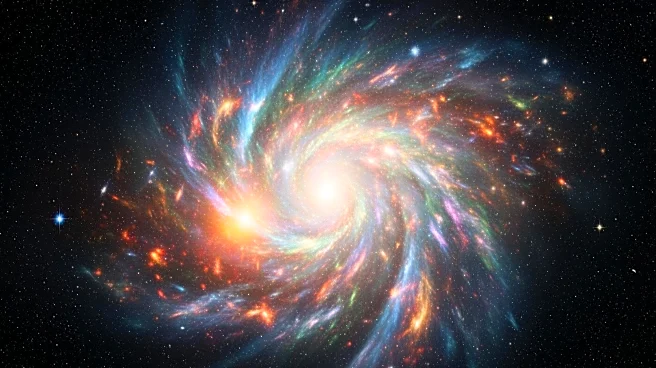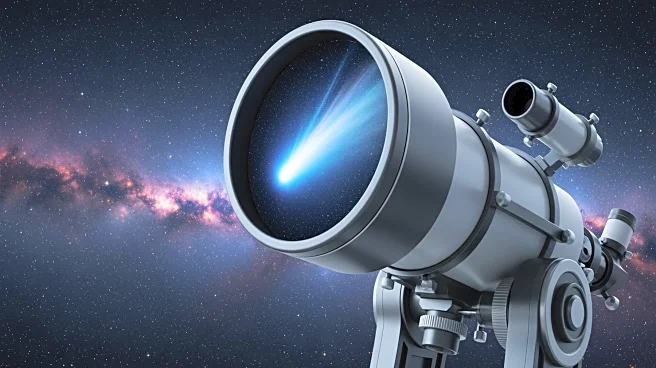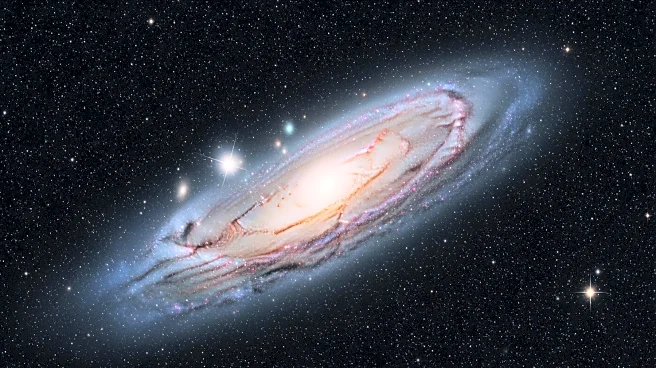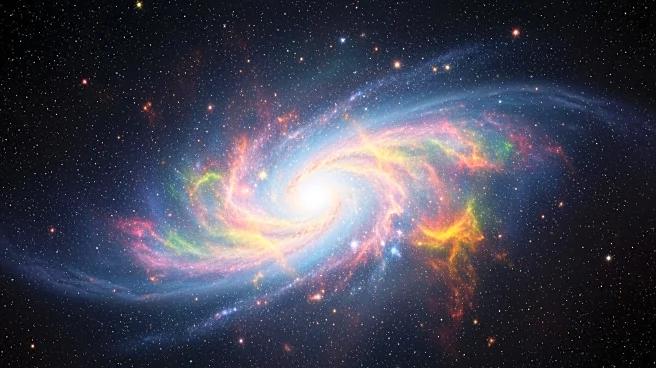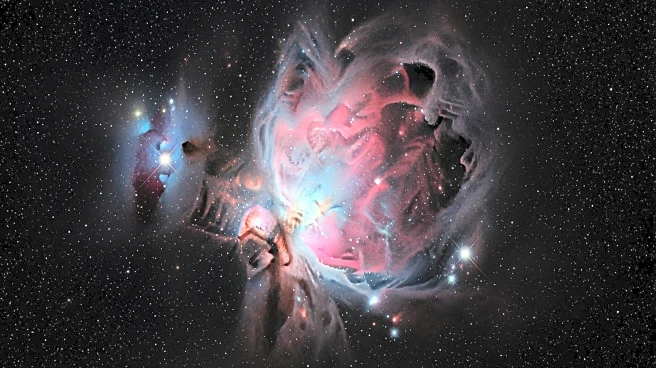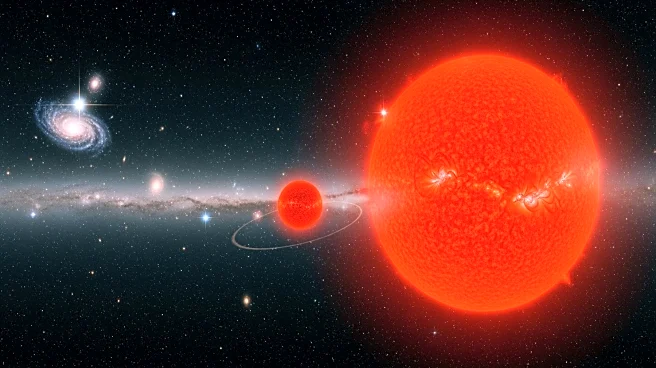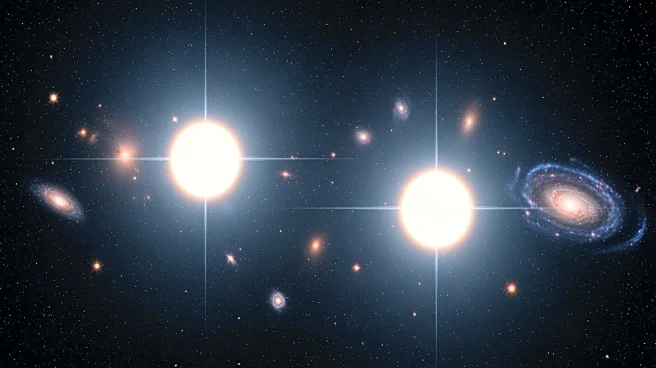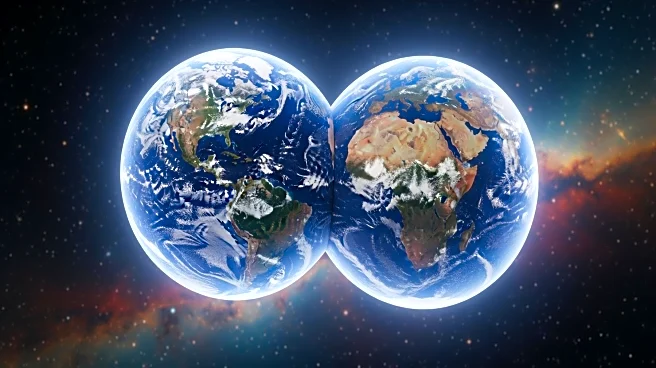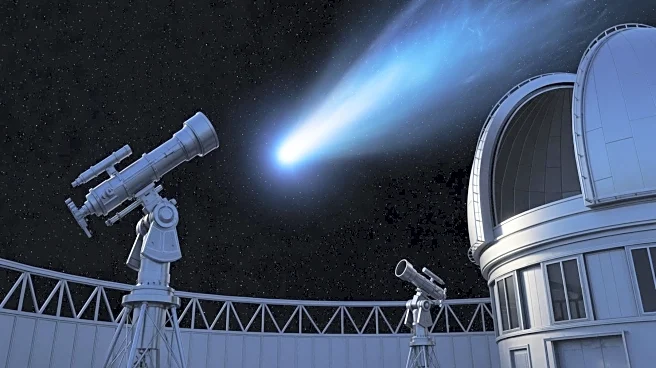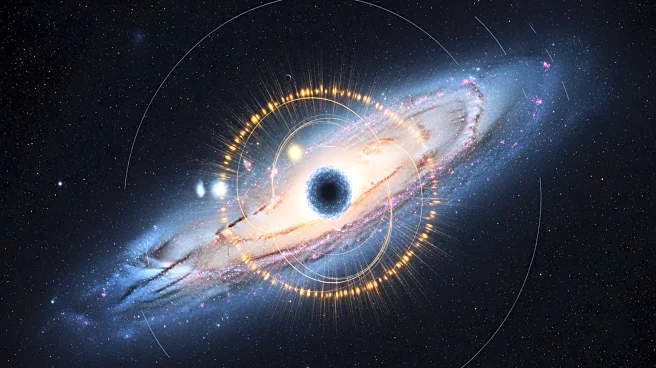What's Happening?
Astrophotographer David Joyce has captured a striking image of the Medulla Nebula, also known as CTB 1, a supernova remnant located in the constellation Cassiopeia. This nebula, resembling both a garlic bulb and a human brain, is the result of a supernova explosion
that occurred approximately 10,000 years ago. The explosion not only created the nebula but also gave rise to a pulsar, discovered in 2009 by NASA's Fermi Gamma-ray Space Telescope. Joyce's photograph, taken from his backyard in Lexington, Kentucky, required over 50 hours of exposure time to capture the faint details of the nebula under light-polluted skies.
Why It's Important?
The image of the Medulla Nebula provides valuable insights into the life cycle of stars and the processes that occur following a supernova explosion. Such astrophotography contributes to our understanding of cosmic phenomena and the evolution of the universe. The Medulla Nebula's visibility in multiple wavelengths, including radio, X-ray, and visible light, offers researchers a comprehensive view of the interactions between stellar material and interstellar gas. This information is crucial for advancing our knowledge of stellar evolution and the dynamics of supernova remnants.
What's Next?
Astrophotographers and astronomers will continue to study the Medulla Nebula and similar supernova remnants to uncover more about their formation and impact on the surrounding interstellar medium. Advances in telescope technology and imaging techniques will enable more detailed observations and analyses, potentially leading to new discoveries about the nature of supernovae and their remnants. Additionally, public interest in astrophotography may inspire more amateur astronomers to contribute to scientific research by capturing and sharing images of celestial objects.
Beyond the Headlines
The pursuit of astrophotography not only enhances scientific understanding but also fosters public engagement with astronomy and space exploration. By capturing and sharing images of distant cosmic phenomena, astrophotographers like David Joyce help bridge the gap between complex scientific concepts and public curiosity. This engagement can inspire future generations to pursue careers in science and technology, contributing to the advancement of space exploration and our understanding of the universe.
